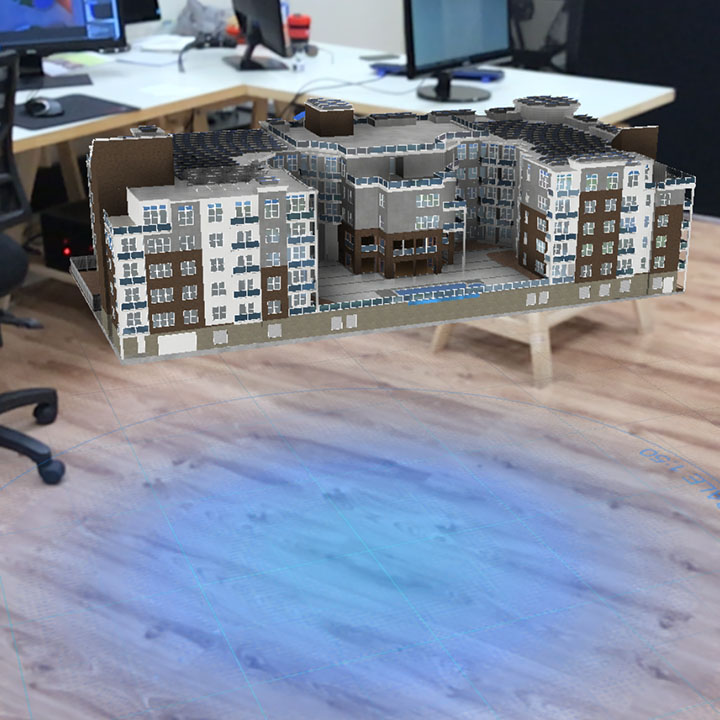Viewport is working on Apple’s Augmented Reality platform
While Virtual Reality creates it’s own world, Augmented Reality brings digital elements into the real world; it could bring about a revolution in project productivity of large scale construction and small scale furniture assembly by overlaying fool-proof instructions. Potential applications easily extend to navigation, interior design, food preparation, storytelling etc.
ARKit is a new framework by Apple releasing as a part of iOS 11 this coming spring. The new technology allows compatible devices to track where they are in the world, meaning simulated objects in your viewport stay in their place in the world. There is also functionality that interacts with planes detected by the camera. A shadow of your virtual object can be cased based on a light source picked up by the camera. Your mesh can be occluded behind surfaces that can be treated as physics objects with virtual content spilling or bouncing on them.
The new AR Technology will be made available on every iOS device as or more powerful than the iPhone 6S. Apple’s AR accessibility could make it a major catalyst for Augmented Reality in the same way Oculus was for Virtual Reality.
Google has their own AR technology available called ‘Tango’ with higher quality tracking. Apple, however, is jumping far ahead with ARKit in terms of accessibility. Google’s Tango is only available on a select few devices for development while Apple’s AR will be available on every iOS device released since September 2015.
There has been speculation that ARKit will utilize the the depth sensing dual camera on the iPhone 7 plus and later phones for much more accurate tracking. Whether this is true or not is unclear at the moment but either way we are on the.

